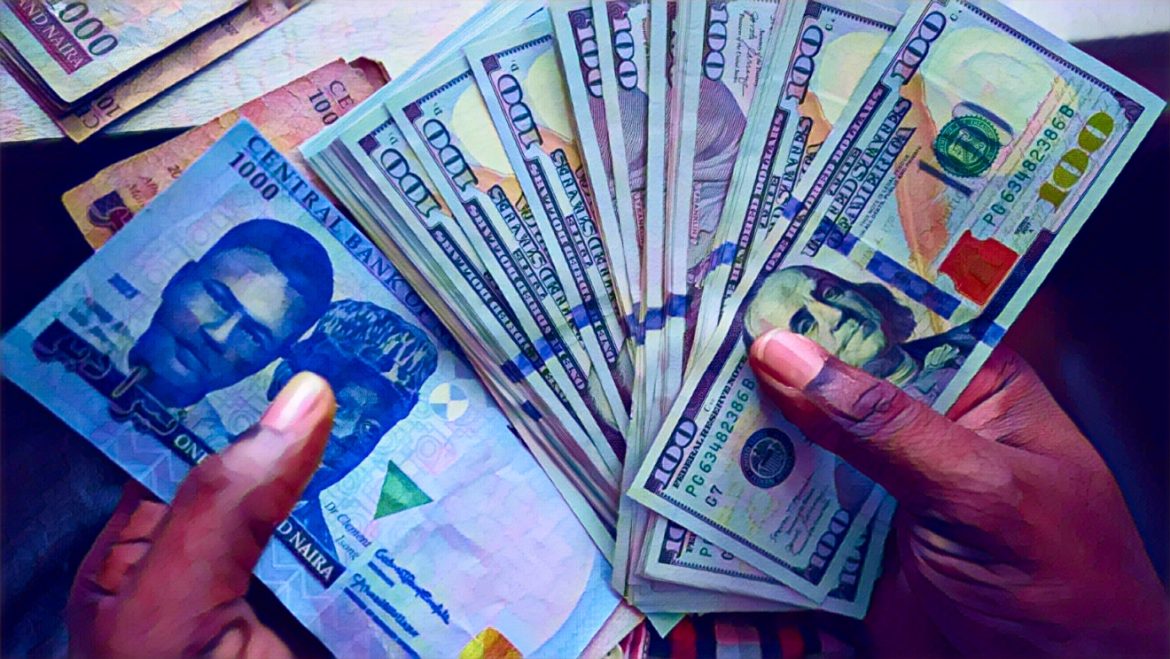Key Points
-
The dollar to naira exchange rate steadied near ₦1,466 in official markets.
-
The dollar to naira exchange rate diverged sharply from parallel market rates.
-
CBN faces mounting pressure to boost dollar liquidity.
The dollar to naira exchange rate in Nigeria stayed calm on Monday, but it was still fragile. This was because there were still not enough dollars available and tensions were rising between the official and parallel markets. According to the Central Bank of Nigeria (CBN) and authorised dealers, the naira closed at ₦1,466.32 per US dollar on October 21, 2025, in the Nigerian Autonomous Foreign Exchange Market (NAFEM).
However, on the parallel market, street traders in Lagos and Abuja said the naira was worth between ₦1,490 and ₦1,495 per dollar, which made the gap even bigger, now more than ₦25. Abdullahi Oni, who runs a bureau de change in Lagos, says that the system is still under a lot of stress because commercial banks don’t have enough money and demand is driven by imports. He said, “There aren’t enough dollars in circulation, which is why the street price keeps going up.”
The dollar to naira exchange rate shows problems with Nigeria’s foreign exchange system, such as slow oil receipts and slow remittance inflows. The CBN, which is led by Governor Yemi Cardoso, has had a hard time keeping liquidity flowing even though they made changes to unify the FX window earlier this year.
The official rate stays the same, but there are still problems
Data from the Financial Markets Dealers Quotations (FMDQ) platform show that business at the official window dropped to about $82 million, which is a drop of almost 15% from the week before. The lower volume means that exporters and foreign portfolio investors are sending less, and many of them are still being careful because they don’t know what Nigeria’s macroeconomic policy will be.
Manufacturers and importers are two of the groups that have been hit the hardest. The Manufacturers Association of Nigeria (MAN) said that the unstable exchange rate has made it more expensive to buy raw materials and made it harder to plan production. Inflation rose to 31.7 percent in September, the highest level in almost 20 years. This was mostly because of higher costs for imported goods and shipping.
According to a report by Vanguard news, Dr. Obinna Uzo, a financial analyst based in Lagos, said, “The naira’s current level is not sustainable without stronger non-oil exports.” He said that the country could see more inflationary spikes before the end of the year if the CBN doesn’t make it easier for productive sectors to get foreign exchange.
Analysts think about what the dollar to naira exchange rate will do next
Analysts think that three things will affect the dollar to naira exchange rate in the future: the money Nigeria makes from exporting crude oil, the money Nigerians send back home, and the way the CBN intervenes. If oil production drops from its current average of 1.35 million barrels per day, it could make liquidity even tighter.
The World Bank recently said that Nigeria’s foreign exchange reserves, which were $33.2 billion in September, could go down if the central bank keeps defending the naira without enough money coming in. There is still some hope, though. The Ministry of Finance and the Nigerian Investment Promotion Commission are working with investors to bring in medium-term capital.
The dollar to naira exchange rate today is both a sign of and a test of Nigeria’s ability to make reforms. It is stable on the official books, but not so much underneath.


